o install a lock on a drawer, first measure and mark the desired position for the lock. Then, use a drill to create holes for the lock mechanism and attach the lock using screws.
Why You Should Install A Lock On Your Drawer Today!
Are you concerned about the security of your belongings? If so, it’s time to take action and install a lock on your drawer. In this blog post, we will discuss the rising need for increased security measures, the consequences of leaving your belongings unprotected, and how installing a lock on a drawer can provide peace of mind. Don’t wait any longer – protect your valuable items with a sturdy lock!
The rising need for increased security measures
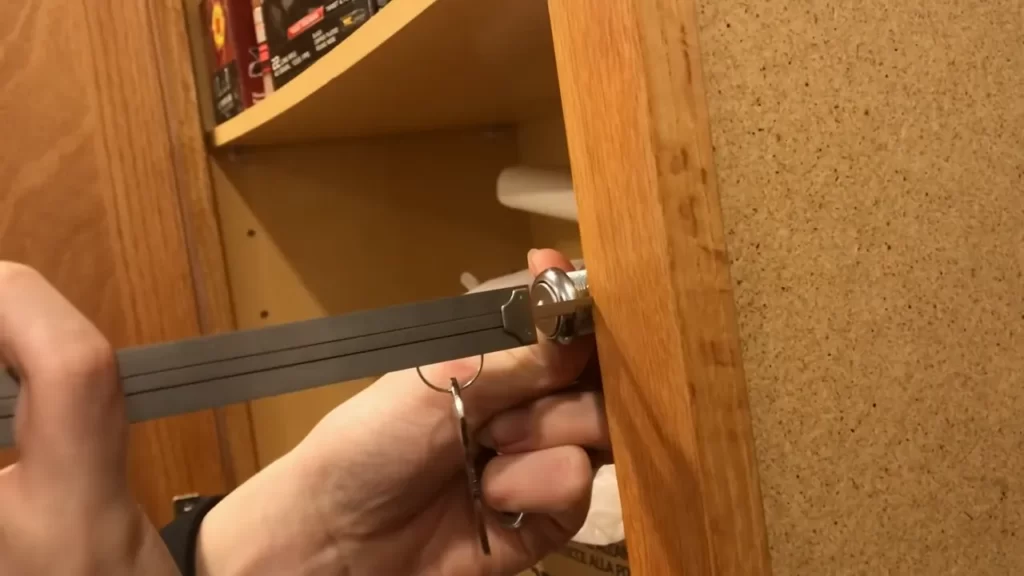
With the increasing rates of theft and burglary, it has become crucial to prioritize your security. No one wants to fall victim to a break-in, losing their cherished possessions and valuable documents. By installing a lock on your drawer, you demonstrate your commitment to safeguarding your belongings and deterring potential burglars. An additional layer of security can go a long way in warding off unauthorized access and ensuring your peace of mind.
The consequences of leaving your belongings unprotected
Leaving your belongings unprotected can have serious consequences. Not only does it put your valuables at risk, but it also leaves you vulnerable to potential identity theft and invasion of your privacy. Your personal information and important documents could end up in the wrong hands, leading to financial loss and emotional distress. Don’t let the negligence of not securing your drawer jeopardize your safety – take action today and install a lock!
How installing a lock on a drawer can provide peace of mind
Installing a lock on your drawer offers a simple and effective solution to ensuring the safety of your belongings. It provides peace of mind, knowing that your valuable items are protected from unauthorized access. Whether it’s your jewelry collection, important documents, or sentimental keepsakes, a lock adds an extra layer of security, giving you the confidence that your possessions are safe. No longer will you have to worry about the consequences of leaving your drawer unlocked – with a reliable lock, you can rest easy.
In conclusion, the need for increased security measures has never been more apparent. By installing a lock on your drawer, you not only protect your belongings from potential theft but also safeguard your personal information and privacy. Don’t wait for a mishap to occur – take action today and install a lock on your drawer. Your peace of mind is worth it!
Understanding Different Lock Types And Features
Understanding Different Lock Types and Features When it comes to securing your drawer, installing a lock is a crucial step. However, with the myriad of options available in the market, it can be overwhelming to choose the right one. To help you make an informed decision, you need to understand the different lock types and features. In this section, we will explore three popular lock types: key locks, combination locks, and electronic locks. Each lock type comes with its unique set of advantages and considerations. So, let’s dive in and explore the various options available.
Key locks: Traditional and reliable
Key locks are the most common and well-known type of locks. They offer a traditional and reliable way to secure your drawer. These locks require a physical key to unlock and lock the drawer. The key is inserted into the lock cylinder, which turns to engage or disengage the lock mechanism. There are two types of key locks commonly used for drawers: 1. Traditional Key Locks – These locks use a standard key and tumbler mechanism. They are easy to use and provide a high level of security. With a vast array of key shapes and sizes available, you can choose a key lock that fits your specific needs. 2. Tubular Key Locks – Tubular key locks, also known as radial pin tumbler locks, provide enhanced security and are more difficult to pick compared to traditional key locks. They feature a round key with several grooves on the circumference, which align with pins inside the lock cylinder to open the drawer. Consider using a key lock if you prefer a traditional and reliable option that doesn’t rely on batteries or complex programming.
Combination locks: Convenience and accessibility
Combination locks offer convenience and accessibility for securing your drawer. Instead of using a physical key, these locks utilize a numerical combination to lock and unlock the drawer. The combination can be set by the user, providing a customizable security solution. Key advantages of combination locks include: – No need to carry a physical key, reducing the risk of misplacing or losing it. – You can easily change the combination as needed, enhancing security. – Multiple users can have access by sharing the combination. Combination locks come in different types, including dial locks and push-button locks. Dial locks require rotating the dial to enter the correct combination, while push-button locks have buttons that need to be pressed in a specific sequence. Consider a combination lock if you value convenience, accessibility, and the ability to easily change the lock combination.
Electronic locks: Advanced security features
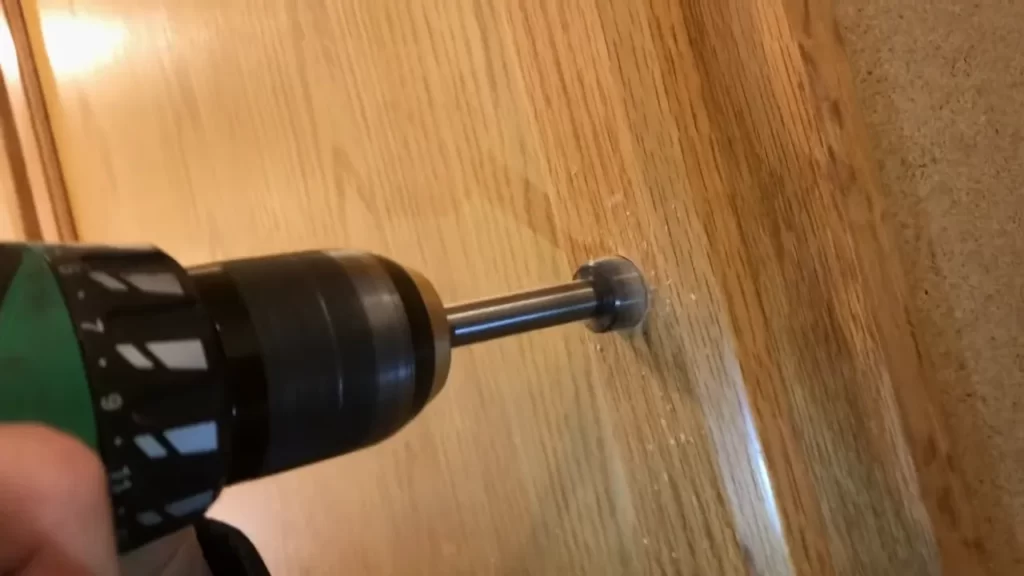
Electronic locks provide advanced security features and offer a modern solution for locking your drawer. These locks utilize electronic components, such as keypads, biometric scanners, or proximity sensors, to unlock and lock the drawer. Advantages of electronic locks include: – Increased security with features like encrypted access codes or biometric verification. – Convenience of keyless entry, eliminating the need for physical keys. – Audit trail capability to track who accessed the drawer and when. Electronic locks can be battery-operated or wired into your existing electrical system. Battery-operated locks are easy to install and offer flexibility in placement, while wired locks ensure a constant power source. Consider an electronic lock if you desire advanced security features, keyless convenience, and the ability to track access to your drawer.
Considerations for choosing the right lock for your drawer
When choosing the right lock for your drawer, there are a few key considerations to keep in mind: 1. Security requirements – Assess the level of security you need based on the contents of the drawer. Consider the value, sensitivity, or confidentiality of the items stored. 2. Accessibility needs – Determine who should have access to the drawer and how frequently it needs to be accessed. This will help you determine if key locks, combination locks, or electronic locks are suitable for your needs. 3. Ease of installation – Evaluate the installation process and ensure it aligns with your technical capabilities. Some locks may require professional installation, while others can be easily installed by following the provided instructions. 4. Budget – Set a budget for your lock installation. Key locks tend to be more affordable, while electronic locks with advanced features may come at a higher cost. By considering these factors, you can select a lock that provides the right balance of security, convenience, and accessibility for your drawer. Remember, choosing the right lock is a crucial step in ensuring the protection of your belongings.
Ensuring A Secure Installation Process
When it comes to installing a lock on a drawer, it is essential to ensure a secure installation process. This not only helps in protecting your valuables but also provides you with peace of mind. In this section, we will guide you through the step-by-step process of installing a lock on your drawer, while emphasizing the importance of maintaining a secure installation.
Gathering the Necessary Tools and Materials
Before you begin the installation process, it is crucial to gather all the necessary tools and materials. This will make the installation procedure smoother and more efficient. Here’s a list of what you will need:
| Tools | Materials |
| ScrewdriverDrillMeasuring tapePencil | Lock mechanismScrewsStrike plate |
Removing the Existing Drawer Hardware
Before you can install a new lock, you need to remove any existing hardware on the drawer. Start by emptying the drawer and removing it from its housing. Then, using a screwdriver or drill, unscrew and remove the current locking mechanism or handles. Make sure to keep track of the screws and any other small parts for future use.
Preparing the Drawer and Lock for Installation
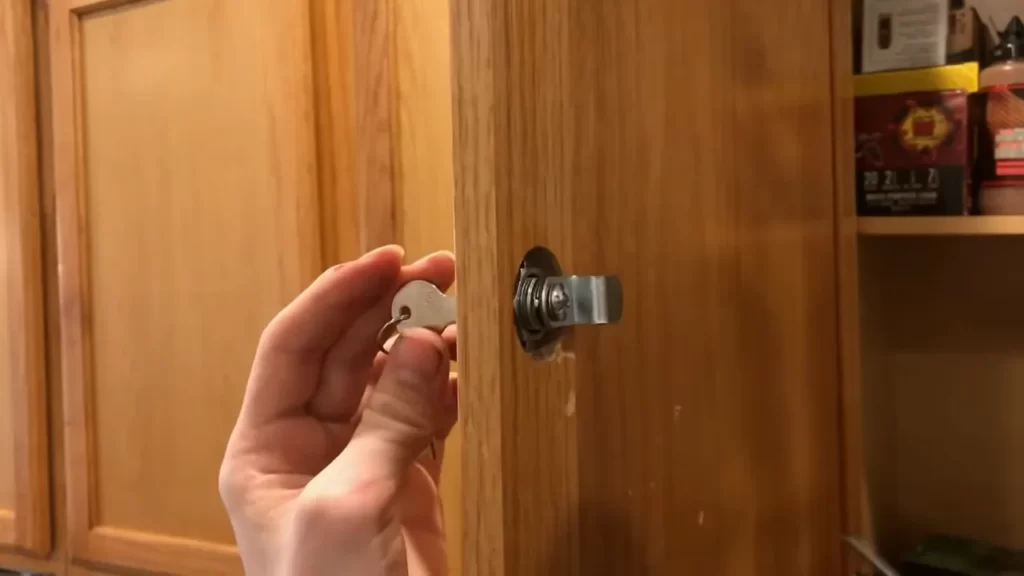
Once the old hardware is removed, it’s time to prepare the drawer and lock for installation. Measure and mark the desired position for the lock on the drawer front, ensuring that it aligns with the strike plate. Using a pencil, mark the spot where the lock mechanism and screws will be placed. It’s crucial to double-check the measurements and markings to ensure a precise and secure fit.
Installing the Lock Mechanism and Securing It Properly
Now that everything is prepared, it’s time to install the lock mechanism. Follow the manufacturer’s instructions for your specific lock model. Typically, you will need to drill holes for the lock barrel and latch, ensuring they align with the previously marked spots. Once the holes are made, insert the lock barrel and latch, securing them with the provided screws. Be sure to tighten the screws firmly but avoid over-tightening, as it may damage the lock or drawer.
Testing the Lock Functionality and Making Any Necessary Adjustments
Before considering the installation complete, it’s crucial to test the lock’s functionality. Close the drawer and insert the key into the lock. Turn the key to ensure smooth operation, ensuring that the latch securely locks the drawer. If any adjustments are needed, such as the alignment of the lock or the strike plate, make the necessary changes and retest until the lock functions smoothly and securely.
Congratulations! You have successfully installed a lock on your drawer. By following these steps and ensuring a secure installation process, you can now rest easy knowing that your valuables are safely locked away.
Tips For Long-Term Performance And Problem Solving
Installing a lock on a drawer is an excellent way to secure your valuables and maintain privacy. However, like any mechanical component, the lock may encounter issues over time. To ensure long-term performance and address common problems, here are some essential tips:
Regular cleaning and lubrication to ensure smooth operation
Regular cleaning and lubrication are vital to ensure the smooth operation of your drawer lock. Dust, dirt, and grime can accumulate inside the lock mechanism, causing it to jam or stick. To prevent these problems, follow these steps:
- Clean the lock and surrounding area using a soft cloth or brush to remove any dust or debris.
- Apply a small amount of graphite or silicone-based lubricant to the keyhole and moving parts of the lock.
- Rotate the key several times to distribute the lubricant evenly.
Performing this simple maintenance task periodically will help keep your lock functioning smoothly.
Addressing common issues such as jamming or sticking
Jamming or sticking of the drawer lock can be frustrating, but fortunately, there are troubleshooting steps you can take to address these issues:
- Check for any obstructions or debris inside the lock mechanism. If found, gently remove them using a tweezer or compressed air.
- Inspect the key for any signs of damage. If the key is worn or bent, consider getting a replacement.
- If the lock continues to jam or stick, it might be necessary to disassemble the lock mechanism. Refer to the manufacturer’s instructions or seek professional assistance.
Addressing these common problems promptly can help maintain the functionality of your drawer lock.
Replacing worn-out parts or seeking professional assistance
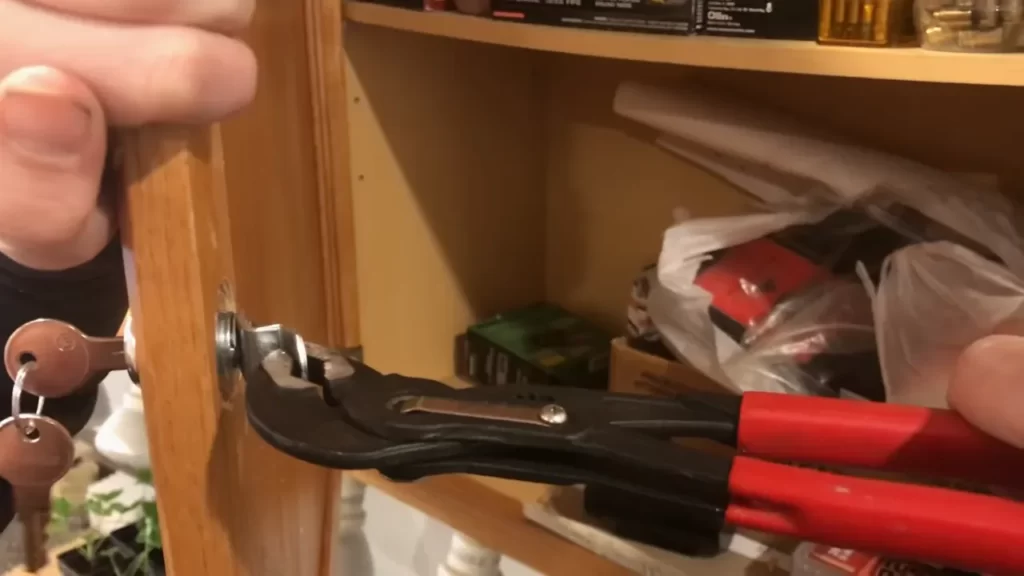
If you notice that certain parts of your drawer lock are worn or damaged, it is essential to replace them for optimal performance. Here are some steps you can take:
- Identify the worn-out part of the lock, such as the latch or cylinder.
- Consult the manufacturer’s instructions or contact their customer support for information on obtaining replacement parts.
- If you are unsure about the replacement process, consider seeking professional assistance to ensure the lock is installed correctly.
Proactively replacing worn-out parts will help prevent further issues with your drawer lock.
Additional security measures to enhance the effectiveness of the lock
While installing a lock on your drawer provides a layer of security, there are additional measures you can take to enhance its effectiveness:
- Consider installing a reinforced strike plate on the drawer frame for added strength and resistance against forced entry.
- Use high-quality screws or bolts to secure the lock and strike plate to the drawer and frame.
- Use a lock with a higher security rating or additional features, such as a combination lock or electronic keypad, for increased protection.
Adding these extra security measures will help maximize the effectiveness of your drawer lock and further safeguard your belongings.
By following these tips for long-term performance and problem-solving, you can ensure that your drawer lock operates smoothly and provides the security you need.
Going Beyond Basic Lock Installations
Installing a lock on a drawer may seem like a simple task, but there are ways to go beyond basic installations to enhance security and add unique features. By implementing additional techniques and exploring innovative lock options, you can ensure that your drawer remains secure and inaccessible to unauthorized individuals. In this post, we will discuss some advanced methods for lock installation, including the use of reinforcement plates or bars, hidden or camouflaged locks, smart lock options, and customization to fit specific security needs.
Adding reinforcement plates or bars for extra strength
To reinforce your drawer’s lock, you can consider adding reinforcement plates or bars. These components provide an extra layer of strength and make it more difficult for potential intruders to force open the drawer. Reinforcement plates or bars can be strategically placed to secure both the front and sides of the drawer, ensuring maximum protection.
In order to install reinforcement plates or bars effectively, follow these steps:
- Measure the dimensions of your drawer to determine the appropriate size for the reinforcement plates or bars.
- Choose strong and durable materials, such as stainless steel or iron, for enhanced security.
- Position the reinforcement plates or bars on the inner side of the drawer, aligning them with the existing lock mechanism.
- Secure the reinforcement plates or bars to the drawer using screws or bolts.
- Test the drawer to ensure smooth operation and verify the added strength.
Utilizing hidden or camouflaged locks for added secrecy
If you’re seeking an extra layer of secrecy, hidden or camouflaged locks can offer a discreet solution. These locks are designed to blend seamlessly with the drawer’s appearance, making it difficult for outsiders to identify their presence. By incorporating hidden or camouflaged locks, you can safeguard your belongings without drawing attention to your security measures.
When installing hidden or camouflaged locks, follow these steps:
- Choose a lock style that complements the design of your drawer, such as a lock disguised as a knob or a hidden magnetic lock.
- Identify the ideal location for the lock, ensuring it remains concealed from plain sight.
- Make necessary adjustments to the drawer, such as drilling holes or creating a mechanism to operate the hidden lock.
- Install the lock securely, following the manufacturer’s instructions.
- Test the lock’s functionality to confirm its stealthy operation.
Exploring smart lock options for enhanced accessibility and
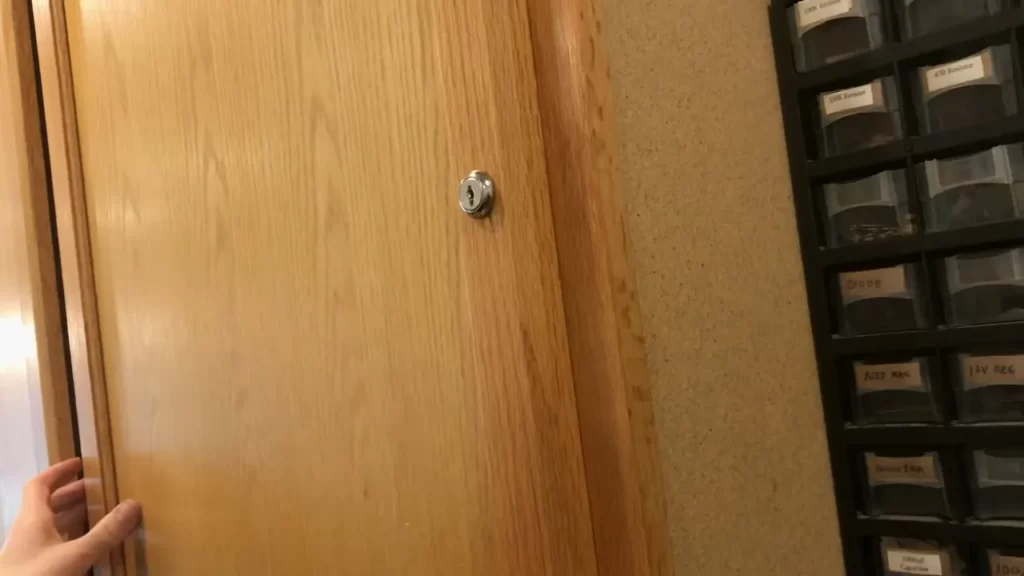
control
For those seeking enhanced accessibility and control over their drawer’s security, smart lock options provide a technologically advanced solution. These locks can be operated remotely using a smartphone or other smart devices, allowing you to lock and unlock your drawer from anywhere with an internet connection. Additionally, many smart locks offer features like access logs, tamper alerts, and temporary access codes, further enhancing security.
To install a smart lock, follow these general steps:
- Select a compatible smart lock that suits your needs and preferences.
- Download and install the corresponding mobile app for the smart lock.
- Follow the app’s instructions to connect the lock to your smartphone or smart device.
- Physically install the smart lock on the drawer, ensuring proper alignment and securing it according to the manufacturer’s guidelines.
- Configure the lock settings through the mobile app, including access permissions and security features.
- Test the smart lock to ensure seamless connectivity and functionality.
Customizing your lock system to fit specific security needs
Every security scenario is unique, therefore, customizing your lock system is essential to achieving optimal protection measures. By tailoring the lock installation to fit your specific security needs, you can reinforce vulnerabilities and minimize potential risks. Whether it’s incorporating multiple locks, integrating biometric scanners, or designing a complex locking mechanism, customization allows you to create a personalized solution that best suits your requirements.
When customizing your lock system, consider the following:
- Analyze the potential risks and vulnerabilities associated with your drawer’s contents.
- Research and select lock components that align with your desired security level.
- Consult with a locksmith or security expert to ensure proper installation and functionality.
- Regularly test and evaluate the effectiveness of your customized lock system.
Remember, the ultimate goal is to achieve a lock system that not only deters unauthorized access but also provides peace of mind for both personal and professional use.
Frequently Asked Questions For How To Install A Lock On A Drawer
How Do You Install A Cam Lock On A Drawer?
To install a cam lock on a drawer, follow these steps: 1. Position the cam lock in the desired location on the drawer. 2. Mark the screw holes. 3. Drill pilot holes for the screws. 4. Attach the cam lock with screws.
5. Test the lock to ensure it functions properly.
How Do You Lock Cabinet Drawers?
To lock cabinet drawers, follow these simple steps: 1. Purchase a cabinet lock or latch from your local hardware store. 2. Measure and mark the desired placement for the lock. 3. Install the lock by following the manufacturer’s instructions. 4. Test the lock to ensure proper functionality.
5. Keep the key or combination in a safe place.
Can You Add A Lock To A Cabinet?
Yes, it is possible to add a lock to a cabinet. Just purchase a suitable lock and follow the installation instructions. It’s a simple way to keep your cabinet secure and protect its contents.
How Do You Lock A Drawer Without A Lock?
To lock a drawer without a lock, you can use simple methods like using a zip tie, placing a small padlock on the handles, or using a cabinet magnet. These solutions provide a temporary way to keep the drawer secure.
Conclusion
In a nutshell, installing a lock on a drawer is a simple yet essential task that enhances the security of your belongings. By following the step-by-step guide provided above, you can easily accomplish this DIY project without any professional assistance.
Remember, the process involves choosing the right lock, preparing the drawer, attaching the lock, and testing its functionality. So, why wait? Safeguard your valuables by adding a lock to your drawer today!
